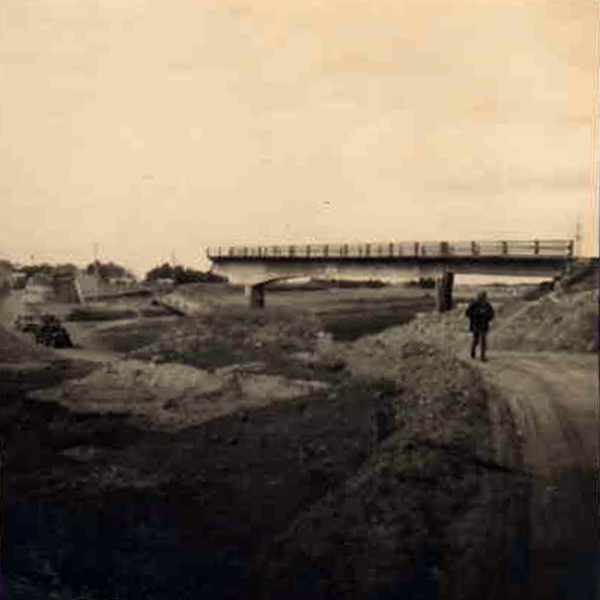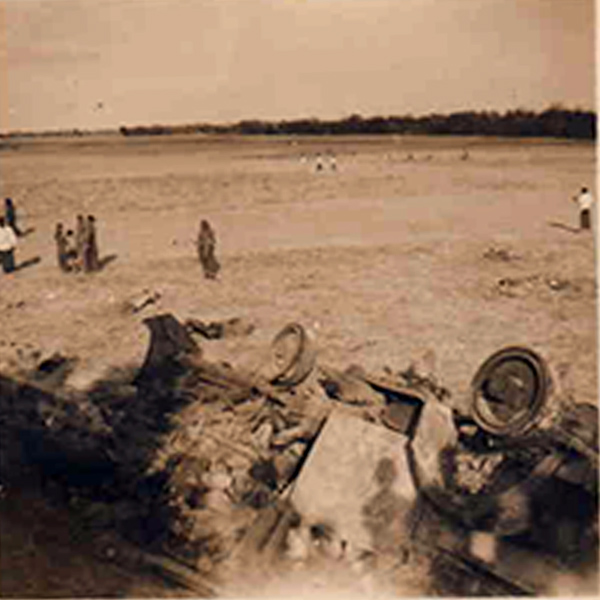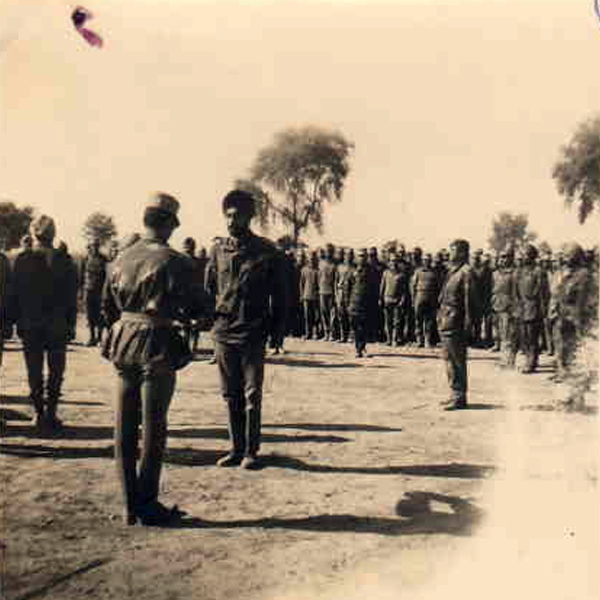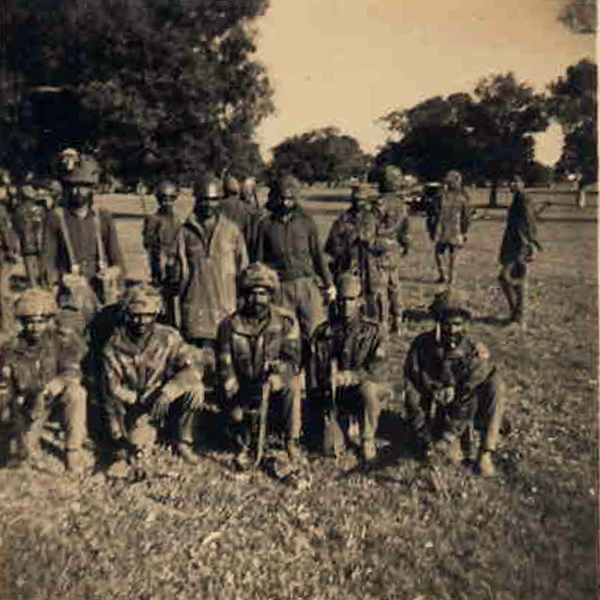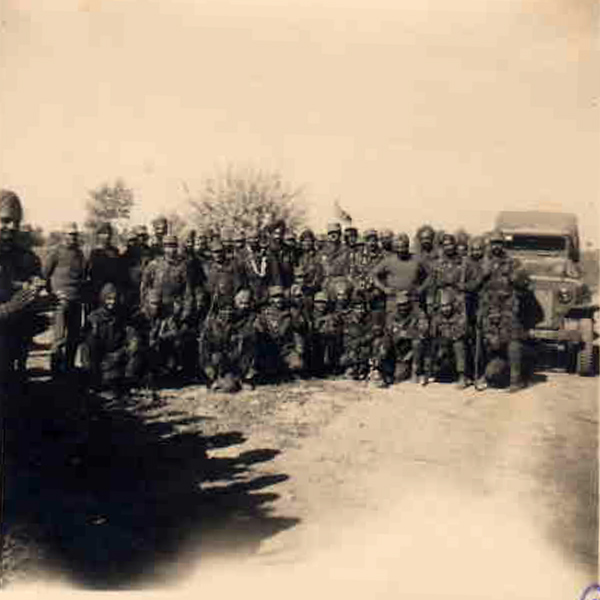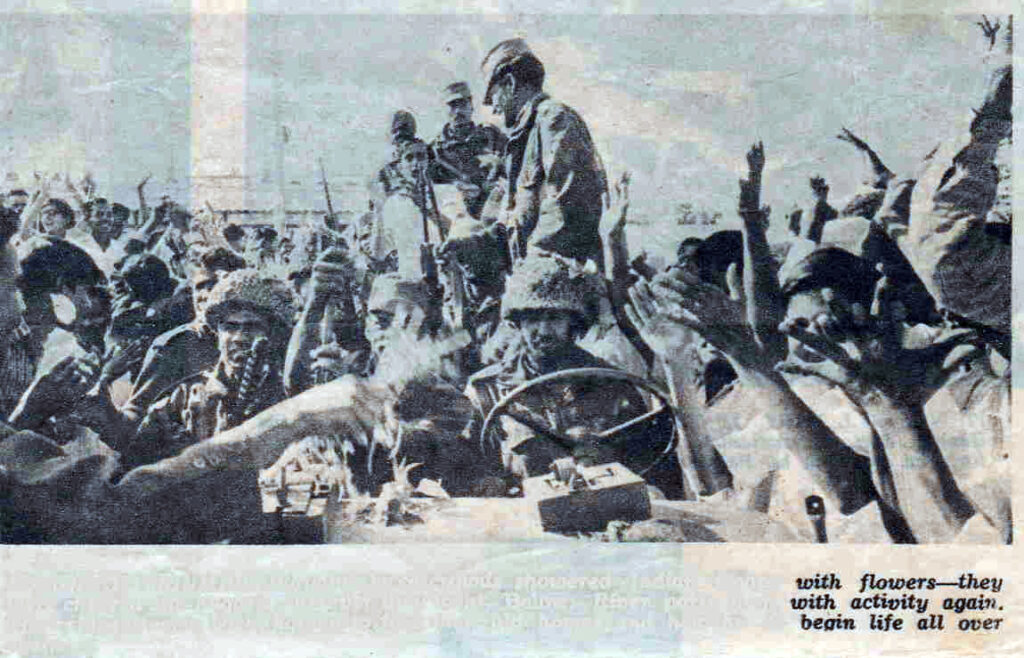The lieutenant’s first- hand account as command of ‘Return to Sappers’ animates the tale of success against Pakistan in 1971 – By Lt. Tejinder Singh
I was commissioned in December 1969, and opted to join the Bombay Sappers with aim of being a part of a frontline outfit, as well as serve in a technical arm, to command Maratha troops with which I had parental linkage ( My father, Brigadier Sucha Singh VrC, MC had commanded 2 Para ( Maratha ), then 1 Para ( Punjab ) and raised 51 Parachute Brigade at Gwalior). I, consequently, volunteered for Parachute duties and was posted to 411 Parachute Field Company after Young Officer’s course.
50 Parachute Brigade was mobilised sometime in February 1971, initially to counter the Naxalbari insurgency that had overtaken Bengal at that time and this deployment morphed into the Operational deployment for Operation Cactus Lily in East Pakistan. 411 Parachute Field Company moved for the Operation in July 1971. An airborne assault had been planned as part of the Operation.
The Parachute Brigade was commanded by Brigadier Mathew Thomas, who was a subaltern in 2 Para when my father had commanded the unit. He earmarked his own Battalion, 2 Para, for the Airborne Assault and also insisted that the honour of commanding the Engineer Platoon forming part of the Battalion Group should go to me, being the son of a former Commanding Officer of the battalion.
2 Para was located in the Botanical Garden in Calcutta while we were located at Barrackpore and moved to the Botanical Garden to marry up with 2 Para on outbreak of hostilities. The objective given to the battalion was to capture the bridge on the Poongli river intact, thereby isolating the strong points of Jamalpur and Mymensingh from Dacca.
Aerial photos of the target area confirmed the presence of bunkers on both sides of the bridge. Since the only immediate Engineer task was neutralising the demolition charges on the bridge, the platoon was disposed of in four sections. The first section, with D Company, had an independent task to deny a ferry crossing about four kilometres downstream. One section each was tasked with stops placed about a kilometre north and south of the main position, and the fourth section was in reserve with platoon headquarters. These sections were to be concentrated, should the need for any engineering task arise.
We moved out from the Botanical Gardens into Quarantine on Night 10/11 Dec 1971. However, the evening before, the Platoon JCO Nb/Sub Nawaji Bagal informed me that two of our personnel were missing. This jolt from the blue caused me to activate the entire platoon in search of the two. The defaulters were located in a ditch, dead drunk. I had rather radical views about such behaviour and decided it called for summary punishment in the form of shooting to death for cowardice. Mercifully, my JCO persuaded me to withhold the sentence on the grounds that it would be better to “take action’’ in the operational area. This was as sane an advice by an experienced old soldier to an over eager youngster, as has ever been given, because the punishment never took place. However, Sapper Jagdale who was my jeep driver was removed from the position and Sapper Sadhu Singh took over.
Practically the entire transport aircraft fleet of the IAF was utilised for the Para drop of the Battalion Group on 11 Dec 1971, with Kalaikunda and Dum Dum airfields being used, (Packet C119s from Dum Dum and Dakotas from Kalaikunda ). We took off from Dum Dum, from where all heavy drop equipment like guns, RCLs and jeeps also were loaded onto the C119s. The drop took place during daylight hours at 1630h, approximately 3 to 4 Kms from the objective. Three things come to mind as I look back. Firstly, the air dispatchers went about distributing chocolate to us in a welcome change to normal procedure, secondly, unlike in practice jumps, the Dropping Zone (DZ) was strewn with left over parachutes of the Heavy Drop and previous sticks and thirdly, we were dropped at 700 feet, so one was on the ground rather quickly. Villagers gathered around DZ, informed us that Pakistani officers had already evacuated the Jamalpur and Mymensingh garrisons. So, the subsequent Pakistani elements that ran into our position were basically JCO/NCO lead parties withdrawing to Dacca.
The objective was captured without any opposition and I immediately confirmed that no demolition charges were in place nor were the bunkers booby trapped. By now it was after last light and I was standing on the bridge along with an Observation Post officer of 17 Para Field Regiment, when we observed vehicles approaching at full speed from the North ( direction of Mymensingh) with headlights on. The Gun Position Officer at the DZ confirmed on the artillery net that none of our vehicles had left the DZ and that these were enemy vehicles. While other vehicles stopped well short of our position, one 1 Ton vehicle drove on into the Battalion defended area. It was stopped by a Rocket Propelled Grenade shot and overturned. This was an enemy Engineer team coming to prepare our bridge for demolition. One officer and about 15 enemy sappers were captured alive besides several killed on the spot. Explosives in the vehicle caught fire and burnt the whole night.
A little after midnight I was called to Battalion Headquarters where the CO, Lt Col KS Pannu anticipating a counterattack, said that mines need to be laid. Since no mine had been received from the DZ, I offered to take a patrol out to the DZ and get them. This done, mine laying started around first light by me, using my reserve section. While we were laying the mines, I noticed an enemy party advancing towards us. I therefore pulled the section out and proceeded to the bridge which was at a considerable elevation. The enemy personnel coming towards us moved over the mines that we had just laid, and we saw one individual being blown up by a mine. Thereafter, in the ensuing fire fight and artillery shelling, this enemy party was neutralised. Sometime later a large body of troops (about 50) was observed trying to outflank our position and cross the river in order to retreat to Dacca. Two Medium Machine Guns (MMGs) positioned opposite their crossing point, waited till they were all in the open sand banks of the river and neutralised them. Watching this action from the vantage point of the bridge was a surreal experience.
I was then asked to go out as part of a patrol to try and recover as many enemy vehicles as possible out of the lot that had stopped short of our position the previous night and had survived the strafing by our fighter aircraft earlier that morning. While most vehicles had been destroyed and were deserted, there were some enemy personnel still with the vehicles and a fire fight ensued. I shot one individual at close quarters and after all the rest had been silenced, took his steel helmet and replaced my turban with it. It had his name ” Ziafat ” written in ballpoint ink on the inside strap of the helmet. I got hold of a brand-new Isuzu truck and drove it into the Battalion area.
The Link up by 1 Maratha Light Infantry (MLI) took place around mid-day of 12 Dec 1971. The leading platoon commander of 1 MLI was my course mate Second Lieutenant B.K. Ponwar. While inspecting of the bodies of Pak soldiers killed the previous night, I found one youngster whose pay book showed that he had just joined the Pakistani army and had drawn only one payment. We also found a boot, with the toe blown off, belonging to the individual who had stepped on our mines. I quickly recovered the mines we had laid, since I did not want to be left behind when the Battalion Group started the move southwards towards Dacca. We moved to Tangail proper on 13 Dec 1971.
On Night 15/16 Dec 1971 we advanced towards Dacca and stopped at an outskirt of Dacca named Mirpur where the Battalion firmed in. In the morning, I had gone to the forward company to access any mine laying requirement and was sitting eating a breakfast of eggs with the company commander Maj. J.S. Sethi. We observed a jeep driven by the Adjutant, 2 Para, Capt. Nirbhay Sharma, flying a white flag, approach from the rear. He stopped and informed us that he had been tasked by Major General Nakra to take a note over to the Pakistani lines advising them to surrender to avoid unnecessary bloodshed. Both, Maj. Sethi and I decided to join in the mission and jumped on board the jeep.
We drove into the very forbidding looking Pakistani forward defences without a shot being fired at us or being challenged. After we had gone a about a hundred yards, an NCO carrying a Light Machine Gun (LMG) stopped us. He was highly excited and shivering and consequently was instantly obeyed by all of us and he effectively took us POW. An officer then appeared and took us to the Pakistani Battalion Headquarters. We were courteously treated, and information of our arrival transmitted to the sector commander, a Major General, who then arrived on the scene in a shiny Black Buick.
After he read the note, he ordered our weapons, equipment and vehicle restored and we moved along with him towards 2 Para for him to parley with Gen Nakra. A Pakistani Lieutenant belonging to the unit, which was holding their defences, jumped into our jeep just as we were underway and was sitting with his legs outside the jeep. About halfway back an LMG opened upon us from 2 Para and we were caught in the open, unable to take any shelter, as the road was on an elevated bund. Maj Sethi took a burst on his left knee and lost his leg and the Pakistani officer, a shot on his heel. I was hit on the head and I thought that the bullet had ricocheted off my helmet. In fact, the bullet had pierced the helmet on the left side, burnt the scarf I was wearing under and exited at the back of the head. I narrowly missed becoming one of only persons in the history to have been killed by his own father’s Battalion! Needless to say, the helmet is a prized souvenir.
Thereafter, the move into Dacca was a free for all with cheering crowds heralding our entry to the cries of “Joy Bangla”. Since I was mobile, unlike the rest of the Battalion, I was able to get ahead and first took down the nearest Pakistani Flag that I came across. I then entered Dacca International Hotel. There I was stopped by some persons of the International press who stated that this was neutral territory and hence out of bounds to both militaries. I responded that this provision was null and void now since there was only one side left. This led to much mirth and backslapping. A photograph of us driving into Dacca with me at the wheel and N/sub Nawaji Bagal in the co-driver seat appeared in the Illustrated Weekly of India and also in the Newsweek magazine captioned “Indian troops entering Dacca”.
Intelligence reports before we emplaned for the jump, had indicated that there were seven F-86 Sabre Jets still intact with the Pakistani Air Force, but these were unable to take off since the runway was heavily damaged due to bombing. I therefore headed straight for the airfield to locate these assets. I found the Officers Mess on the airfield totally flattened with only the Officer’s Mess sign board standing. I then went to inspect the bomb damage to the runway and the dispersal area and found the fighters in their blast pens. I got into the cockpit of the nearest fighter and tried my utmost to have it start up but failed in the effort.
The next day, for the surrender ceremony, 2 Para was detailed to provide the guard of honour. However, I was free to move around as I pleased. I drove into the ceremony area just after Lieutenant General A.A.K. Niazi entered. My first impulse was to remove the flag from his vehicle. But I refrained from doing so, as in my opinion it would disgrace the enemy commander. I have regretted this decision ever since, because after the surrender ceremony, when I saw the vehicle again, it had been stripped clean by somebody else.
During the day there was much movement of troops of both armies. Own troops used the one side of the road while Pakistani Army moved on the other side, with Military Police of both armies co-ordinating the movement. I took this opportunity to sightsee Dacca with as many of my platoon that could fit into my jeep and trailer. This was made easy as the Mukti Bahini had taken over all fuel pumps in Dacca and one could just drive in for a free fill up anytime. At one point a Pakistani Havaldar saw us and said “Sahib, if we had officers like you and we were the troops, no army on earth could defeat us”. This remark coming from an enemy was worth more than all other compliments.
We de inducted to Tangail on 18 Dec 1971 and the next day moved by road to New Bogaingaon, the railhead. Para Brigade had moved to the Fazilka sector with 411 Para Field Company being located at Gidderbaha, near Malout where we married up with the unit.
Subsequently, after the Operations were over, an exhibition was held at Bombay Engineer Group &Center, Kirkee and units were asked to send trophies captured during the war. Much against my protests, the Pakistani Flag I had brought was sent for this event.
We never saw the flag again.




